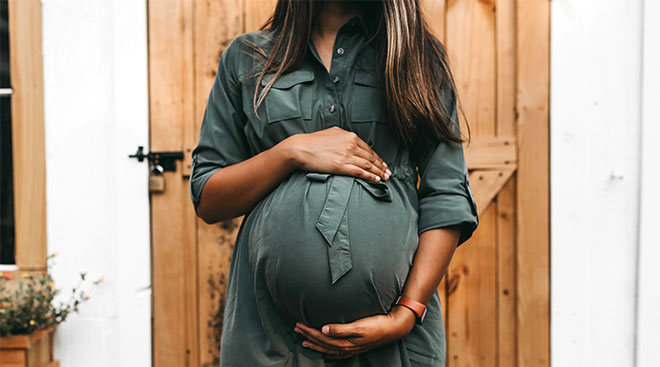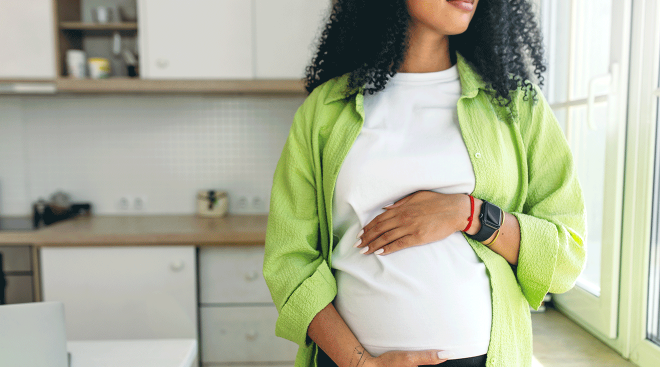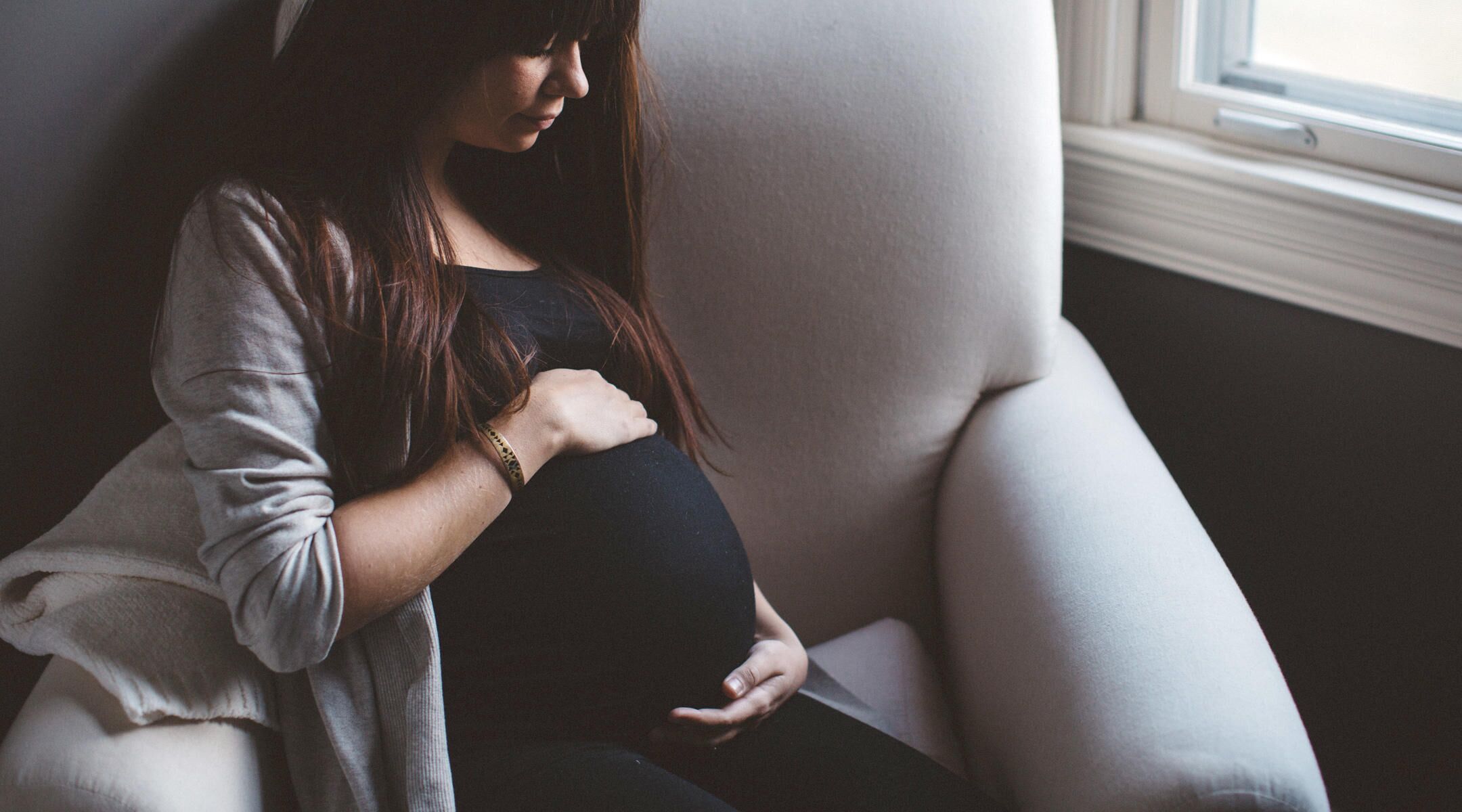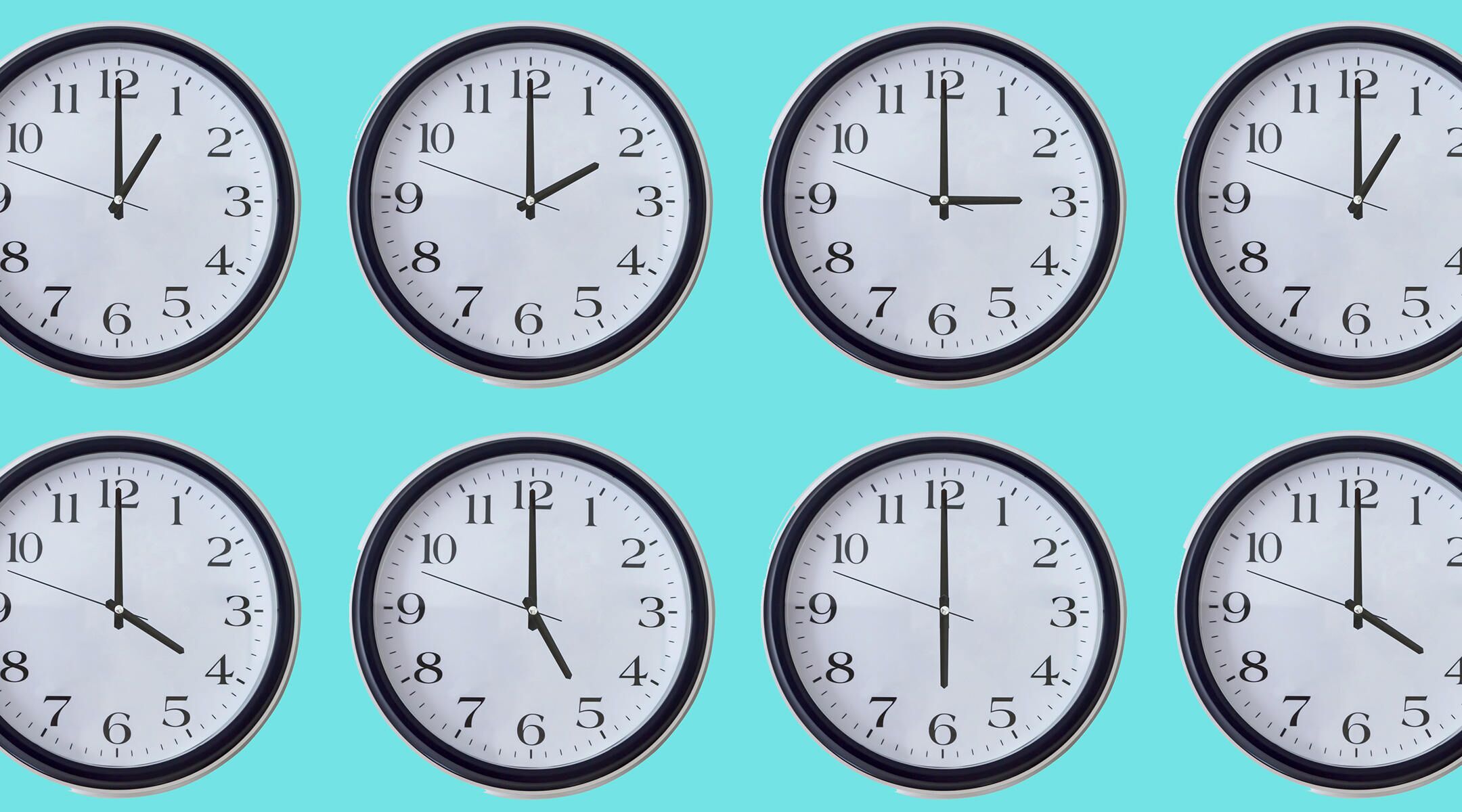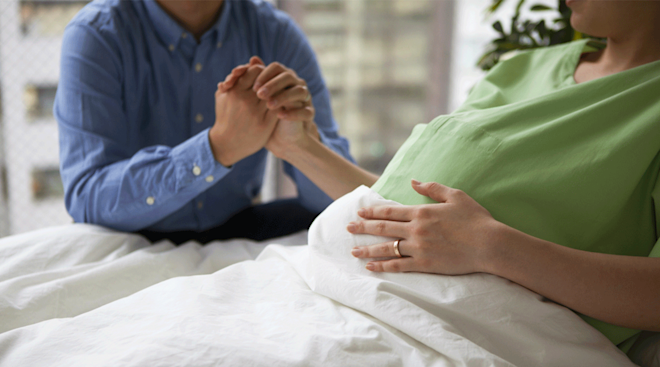What Do Contractions Feel Like?
Talk to any mom about labor and delivery and the question “what do contractions feel like?” is bound to come up. Contractions are what help move things along during labor, although it’s also common to get them before you go into labor. And, as most women will tell you, they feel less than amazing.
The uterus is a large muscle, and just like any other muscle in your body, it will flex when it’s stimulated, explains Sherry A. Ross, MD, a women’s health expert and author of She-ology: The Definitive Guide to Women’s Intimate Health. Period. Hormonal changes can start contractions—but how a woman experiences contractions depends on her pain threshold and what type of contraction she’s actually having (yep, there’s more than one kind). Here are the factors that can affect what contractions feel like.
What do contractions feel like? It depends. There are several different types of contractions, and they’re not all associated with the start of labor. Here are the main ones that should be on your radar:
• Braxton Hicks contractions. These irregular contractions can happen on and off before you’re actually in labor, says Christine Greves, MD, an ob-gyn at the Winnie Palmer Hospital for Women & Babies in Orlando, Florida. You may start feeling Braxton hicks contractions in the second or third trimester. They’re considered practice for the real deal and are sometimes referred to as false labor.
• Preterm contractions. Preterm contractions are those that occur at regular intervals before the 37th week of pregnancy, Greves says. They also may be associated with cervical changes like effacement (when the cervix thins out) and dilation (when the cervix opens) if a woman is actually in preterm labor.
• Early labor contractions. Also known as “latent phase” contractions, these are felt at regular intervals in the initial stages of labor, says Jessica Shepherd, MD, an assistant professor of clinical obstetrics and gynecology and director of minimally invasive gynecology at the University of Illinois College of Medicine at Chicago.
• Active labor contractions. Typically happening five to seven minutes apart, at most, they’re associated with cervical changes, Shepherd says.
• Transition contractions. These contractions are the ones often mimicked on TV. Happening more frequently than active labor contractions, they are needed to push the baby out of the vagina, and they’re the “hardest part of labor,” Ross says.
• Back contractions. Sometimes the positioning of the baby or intensity of uterine contractions can cause women to feel painful contractions at regular intervals in their back, Ross says.
Braxton Hicks contractions are irregular contractions that aren’t associated with cervical changes, and they can happen anytime in a woman’s pregnancy. “With Braxton Hicks, contractions aren’t as powerful as labor contractions,” Greves says. Some women may experience Braxton Hicks contractions and not even realize it. They don’t occur at regular intervals and often kick in at the end of the day or after a lot of activity. Changing position or walking can sometimes alleviate the pain or stop them entirely.
Becky S., a mom of two, had Braxton Hicks contractions during her pregnancy with her second daughter. “They were never so bad that I felt like I was in labor,” she says. “The contractions felt like a squeezing and tightening of my stomach that kept going up and up, mixed with period cramps. Like little lightning strikes.”
If a woman experiences regular contractions before the 37th week of her pregnancy, they’re preterm contractions. Without seeing a doctor, it can be tough to know whether your preterm contractions are happening without cervical changes or if they’re accompanied by the cervical changes that can lead to preterm labor. That’s why it’s important to call your ob-gyn if you’re experiencing any regular contractions, even if it’s before your due date. “No one can predict if these early, painful contractions can become more intense or fade away without any doctor intervention,” Ross says. “The risk of prematurity is too great not to take an active role in attempting to stop the uterine contractions.”
Preterm contractions can range from mildly uncomfortable to painful abdominal cramping, Shepherd says. But some women may not even realize they’re having contractions. “Sometimes women have discomfort and we hook up them up to the monitor to see if they’re having contractions,” she says. Do preterm contractions hurt less than actual early labor contractions? “Not necessarily,” Greves says.
Ask several women this question and you’re likely to get a variety of answers. Labor contraction pain can vary from woman to woman because everyone experiences pain differently, Shepherd says. How long and intense the contractions are, and what phase of labor you’re in, can affect your overall perception of the pain too, she says. In early labor, a woman may feel discomfort or just a squeezing feeling in her abdomen. “When you’re in the early part of labor, contractions are typically more tolerable—usually patients aren’t asking for pain relief, or if they are, it’s not for something super-strong,” Greves says.
Active labor contractions, on the other hand, happen when a woman’s cervix is dilating and effacing, and Shepherd describes these as “very intense.” You may find yourself having trouble talking through them. Transitional labor contractions, which happen when the baby is actually coming out, are the “most powerful, frequent and painful,” Ross says.
What do back contractions feel like?
During labor, women may notice lower back pain due to the positioning of the baby or the intensity of the uterine contractions, Ross says. Not all women in labor have back contractions, but they can happen—and when they do, these contractions feel forceful and cause “unbearable pain,” Ross says. Lee P., a mom of three, experienced back contractions and says they felt like “being hit by a truck in my back.”
Do contractions feel like period cramps?
Contraction pain is subjective. There’s no standard or universal norm. However, when describing what contractions feel like, many women do liken them to strong menstrual cramps. “It was like an earthquake of pain through my middle, getting stronger and stronger, then relief and prep for ‘aftershocks,’” says Shana L., a mom of three. But Elaine Q., a mom of two, says, “They just felt like really bad menstrual cramps … it really wasn’t as bad as I expected.”
The discomfort generally starts as a dull pain and tends to increase in intensity as labor progresses.
Where do you feel contractions?
You get it—contraction pain can vary and often feels like intense cramps. But where do you feel contractions? Once again, there’s no definitive answer. You may feel labor contractions in a variety of places, including your abdomen, back and pelvis. Many women compare them to menstrual cramps, while others liken them to bowel movement cramps. The pain can extend through your thighs and down your legs, and some moms-to-be even report feeling contractions throughout their entire body. Suffice to say, the pain might be localized or it could be all-encompassing.
The length and frequency of your labor contractions are often determined by the stage of labor you’re in. Labor contractions can last anywhere from 30 to 90 seconds, and their frequency will increase as you get further along and closer to delivery.
During early labor, contractions tend to last 30 to 45 seconds and often happen at intervals of about 15 to 20 minutes. The kicker here is that these early labor contractions may last for hours or even days as your cervix thins and begins to dilate. The gap of time between labor contractions will gradually get shorter.
Once you reach active labor (dilated 6 cm), your labor contractions will start picking up in speed and intensity. At this point, they can last for roughly 45 to 60 seconds and happen about every five minutes. If you’re experiencing labor contractions at five-minute intervals for up to an hour, it’s time to call your doctor and probably go to the hospital or your chosen birthing location.
In the transitional labor phase, labor contractions can last up to 90 seconds and happen as often as every one to three minutes. When it’s time to push, your contractions will probably still last about one-and-a-half minutes each, but the time between them may (thankfully!) space out a bit more.
Determining whether you’re in labor can be difficult. It’s confusing—especially if you’re experiencing strong Braxton Hicks contractions. The following are a few signs that indicate baby’s arrival may not be far off:
• Regular contractions. You’re feeling strong, predictable contractions that increase in frequency over a period of time.
• Baby may drop. Often referred to as “lightening,” this can happen hours or even days before labor, as baby gets into position for delivery.
• Vaginal discharge and bloody show. You may notice an increase in vaginal discharge as your mucus plug loosens. It may be tinted red or brown, a sign that your bloody show has arrived, and baby will likely soon follow.
• Your water breaks. Don’t worry, Hollywood exaggerates. While it’s possible your amniotic sac could rupture spontaneously several hours before contractions even begin, this only happens about 10 percent of the time. This can happen as a slow trickle or a sudden gush.
Everyone feels and processes pain differently, and your experience with labor contractions may be completely different than that of other women. Either way, if you suspect you’re in labor, contact your doctor—it might just be go time!
Plus, more from The Bump:
Christine Greves, MD, is an ob-gyn at the Winnie Palmer Hospital for Women & Babies in Orlando, Florida. She earned her medical degree from the University of South Florida College of Medicine in Tampa, Florida.
Sherry A. Ross, MD, is a women’s health expert and women’s health expert at Providence Saint John’s Health Center in Santa Monica, California. She is also the author of She-ology: The Definitive Guide to Women’s Intimate Health. Period and She-ology, the She-quel: Let’s Continue the Conversation. She received her medical degree from New York Medical College in Valhalla, New York.
Jessica Shepherd, MD, is an ob-gyn and director of minimally invasive gynecology at the University of Illinois at Chicago. She received her medical degree from Ross University School of Medicine in St. Michael, Barbados.
Learn how we ensure the accuracy of our content through our editorial and medical review process.
Navigate forward to interact with the calendar and select a date. Press the question mark key to get the keyboard shortcuts for changing dates.
































